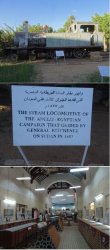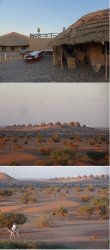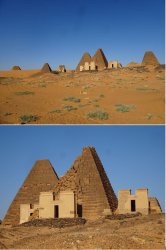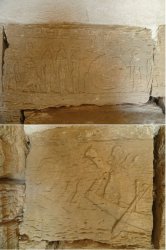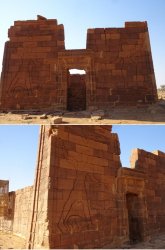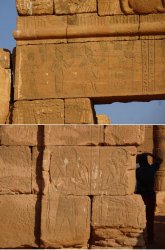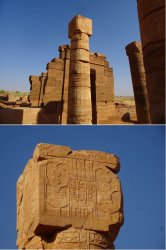JohnM
Enthusiast
- Joined
- Jun 7, 2006
- Posts
- 11,801
- Qantas
- LT Gold
Remnants of an Egyptian-style pyramid (c. 45-degree slope). Nubian-style pyramids (to come at subsequent sites) have a c. 70-degree slope.

The physical proportions of Nubian pyramids differ markedly from the Egyptian type: they are built of stepped courses of horizontally positioned stone blocks and range approximately 6–30 metres in height but rise from fairly small foundation footprints that rarely exceed 8 metres in width, resulting in tall, narrow structures inclined at approximately 70°. Most also have offering temple structures abutting their base with unique Kushite characteristics. By comparison, Egyptian pyramids of similar height generally had foundation footprints that were at least five times larger and were inclined at angles between 40–50°.
I wondered why the Nubian pyramids had such a slope. This may be the explanation:

The next (mother’s) tomb.


Temple in the same complex. Then it was on to a spectacular petrified forest, by which time the sun was getting low in the sky.

Then it was back to the Nubian pyramids at the foot of Jebel Barkal for sunset. Sudan has about 220 pyramids; Egypt has about 80.


And back to the Nubian Rest House to end another passable day.


The physical proportions of Nubian pyramids differ markedly from the Egyptian type: they are built of stepped courses of horizontally positioned stone blocks and range approximately 6–30 metres in height but rise from fairly small foundation footprints that rarely exceed 8 metres in width, resulting in tall, narrow structures inclined at approximately 70°. Most also have offering temple structures abutting their base with unique Kushite characteristics. By comparison, Egyptian pyramids of similar height generally had foundation footprints that were at least five times larger and were inclined at angles between 40–50°.
I wondered why the Nubian pyramids had such a slope. This may be the explanation:

The next (mother’s) tomb.


Temple in the same complex. Then it was on to a spectacular petrified forest, by which time the sun was getting low in the sky.

Then it was back to the Nubian pyramids at the foot of Jebel Barkal for sunset. Sudan has about 220 pyramids; Egypt has about 80.


And back to the Nubian Rest House to end another passable day.



























